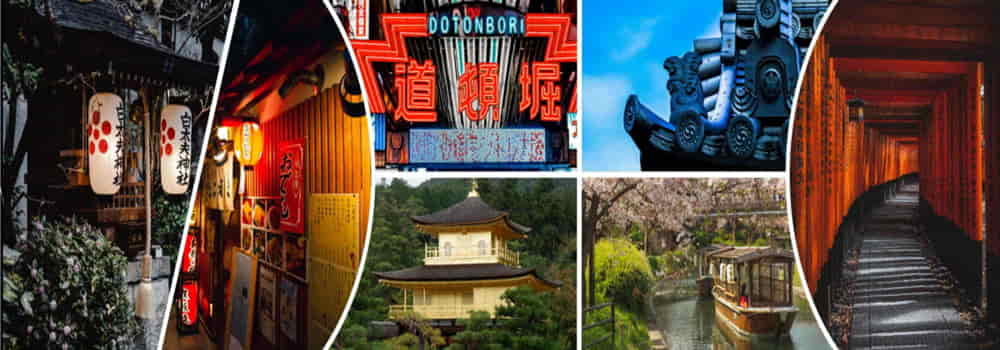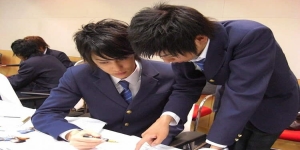The Hassha Melody 発車メロディ

Japan is a country that has made a lifestyle of contradictions and eccentricities: East and West, tradition and modernity, silence and noise merge, creating unexpected results, and it is precisely an unusual peculiarity that this article deals with.
In an environment characterized by continuous noise, such as the stations, we find something singular in such a modern and everyday place: the Hassha Melody (発車メロディ), the melodies of the train.
Basically they are short pieces of music played at the arrival and departure of the train at the station, also called hatsu-meru, tetsumero (tetsu is the first ideogram of the word railway), ekion (from the union of eki which means station and on which means sound), even if for insiders they are more simply the hassha beru (where beru stands for bell).
History
The appearance of this music in Europe can be traced back to 1844, when the French classical pianist Charles Valentin-Alkan composed Le chemin de fer, a programmatic étude for piano designed to represent the happy journey of train passengers as they departed a railway station . This is often cited as the first musical performance of rail travel and was later celebrated as a precursor to Arthur Honegger's famous orchestral work Pacific 231.
In Japan, the idea of the music was first an intuition of the private railway company Keihan Electric Railway (京阪電気鉄道株式会社, Keihan Denki Tetsudō Kabushiki-gaisha, known colloquially as "Keihan Dentetsu" 京阪電鉄, "Keihan Densha" 京阪 電車 or simply "Keihan" 京阪) introduced in 1971 on the Kyoto (京都市 Kyōto-shi)-Osaka (大阪市 Ōsaka-shi) section. The adoption of this particular tune was initially used to distinguish itself, given that most of the railway network was then state-owned, and the sound consisted mostly of simple bells.

The phenomenon spread from 1987, when the former national railway company (JNR 日本国有鉄道, Nihon Kokuyū Tetsudō or Nippon Kokuyū Tetsudō abbreviated to Kokutetsu 国鉄), underwent a privatization process, seeing the network split into 6 large companies in Japan Railways Group (more commonly known as JR Group JRグループ, Jeiāru Gurūpu or simply JR) and a number of smaller operators (now 7). Privatization allowed local managers greater autonomy to personalize the environments of their stations, and among these was the introduction and choice of inserting musical "little tunes" in the stations.
Characteristics
However, these music had to satisfy some "criteria": first of all to warn of the arrival and departure of trains, then to encourage timely but unhurried boarding and disembarkation, moreover to make passengers feel calm and relaxed and finally to stand out above announcements and other noises, as well as each other.
Furthermore, these melodies have a "fixed" length, based on the time a train dwells in the station, i.e. 7 seconds.
Depending on whether the train is departing or arriving, the standard of use required that these be diversified: the former are organized to invoke a feeling of relief in a train passenger after sitting down, while the latter are configured to cause alertness, for example to help travelers shake off drowsiness, especially that experienced by morning commuters.
The appropriate melody is operated by the conductor, i.e. the man or woman who stands in the queue booth and supervises the disembarkation/embarkation of passengers by opening and closing the doors.
The creations
The first music was developed by YAMAHA (the famous musical instrument company) and consisted of piano and harp notes, spread on the shelters. Noting the excellent results found in Shibuya station (渋谷区 Shibuya-ku) and Shinjuku (新宿区 Shinjuku-ku), in October 1989, also the platform of the shinkansen (新幹線) in Sendai station (仙台市 Sendai- shi) had its own tune and later other railway lines were added.
The success was such that in the early '90s it was decided to extend their use more and more, but YAMAHA was asking for too much money, so other specialized companies were consulted, such as Asahi Dentsu (有限会社朝日電通), the Eiraku Electric (永楽電気株式会社) or Uni-pex (ユニペックス), who composed original but long melodies, so JR turned to Teichiku Records (テイチクレコード, Teichiku Rekōdo), a record company and in particular 2 artists : Isamu Haruna (春名功武) and Minoru Mukaiya (向谷 実).

The first is a musician and producer who carried out numerous and in-depth researches on sounds, timbres and the sensations they arouse in the listener; with this approach he discovered in tsukubai (蹲踞) the suitable sonority to develop the timbre.
The second artist, famous musician, keyboardist and leader of the Casiopea band for 26 years, understood the importance of speed and realized that the ideal tempo was 105 beats per minute, played in midi and composed with 8-bit sounds.
Today's situation and types of music
To date they are mainly used by the JR Higashi Nihon (JR 東日本の公式サイト) which covers the eastern part of Japan, including the Tokyo Metro (東京); there are thousands of them and they are extremely varied and particular: there are classic songs, for example Maihama station (舞浜駅, Maihama-eki) plays Disney's "It's a small world" because it has the theme park nearby, while Shin -Ōkubo (新大久保駅, Shin-Ōkubo-eki) and Ueno (上野) adopted a simple telephone sound.
One above all, however, for fans of anime and manga, represents a myth, that of the Takadanobaba station (高田馬場), on the Yamanote (山手線, Yamanote-sen), created to celebrate, since 1 March 2003, a special of the area, or rather the study of the famous mangaka Osamu Tezuka (手塚治虫), remembering him by emitting from the loudspeakers the theme song of "Tetsuwan Atom" (Astro Boy 鉄腕アトム), one of his masterpieces.
But it is not the only one with an anime background because we find another one used in Noborito (登戸駅, Noborito-eki), in the prefecture of Kanagawa (神奈川県, Kanagawa-ken), here is the museum dedicated to Fujiko F.Fujio (藤子 不二雄) part of the manga artist duo Doraemon (ドラえもん).
Audience reception
There are so many fans of these melodies that the Teichiku record company has released various CDs containing over 100 jingles and a pianist, who has transcribed the scores, has sometimes performed in various live concerts in front of the stations; they also proved to be so popular that the manufacturer of carriages and rolling stock Nippon Sharyo (日本車輌製造株式会社, Nippon Sharyō Seizō kabushiki gaisha, literally "Japan Vehicles Manufacture Company") received permission to use 4 of these music owned by the East and West Japan Railway Company to produce an alarm clock containing them in August 2002. This object became so popular that the copies produced, already in the month following its release, were all sold out, the first shipment of 2000 units, priced at 5800 ¥ per device sold out, an incredible success. This success and the continued demand for the product led the company to create a website totally dedicated to him.
Samantha Sisto
Info credits:
skdesu.com
cityrailways.com
it.abcdef.wiki
www.animeclick.it
blog.japanwondertravel.com
Giappogamer
Image credits:
Yahoo
illust-takeou

 English (United Kingdom)
English (United Kingdom)  Italiano (it-IT)
Italiano (it-IT) 


![[Review] Princess Toyotomiプリンセス トヨトミ](https://www.fukainihon.org//cache/mod_jt_contentslider/fdfb524f85518b9476158c79c8ea022f_328.jpg)


